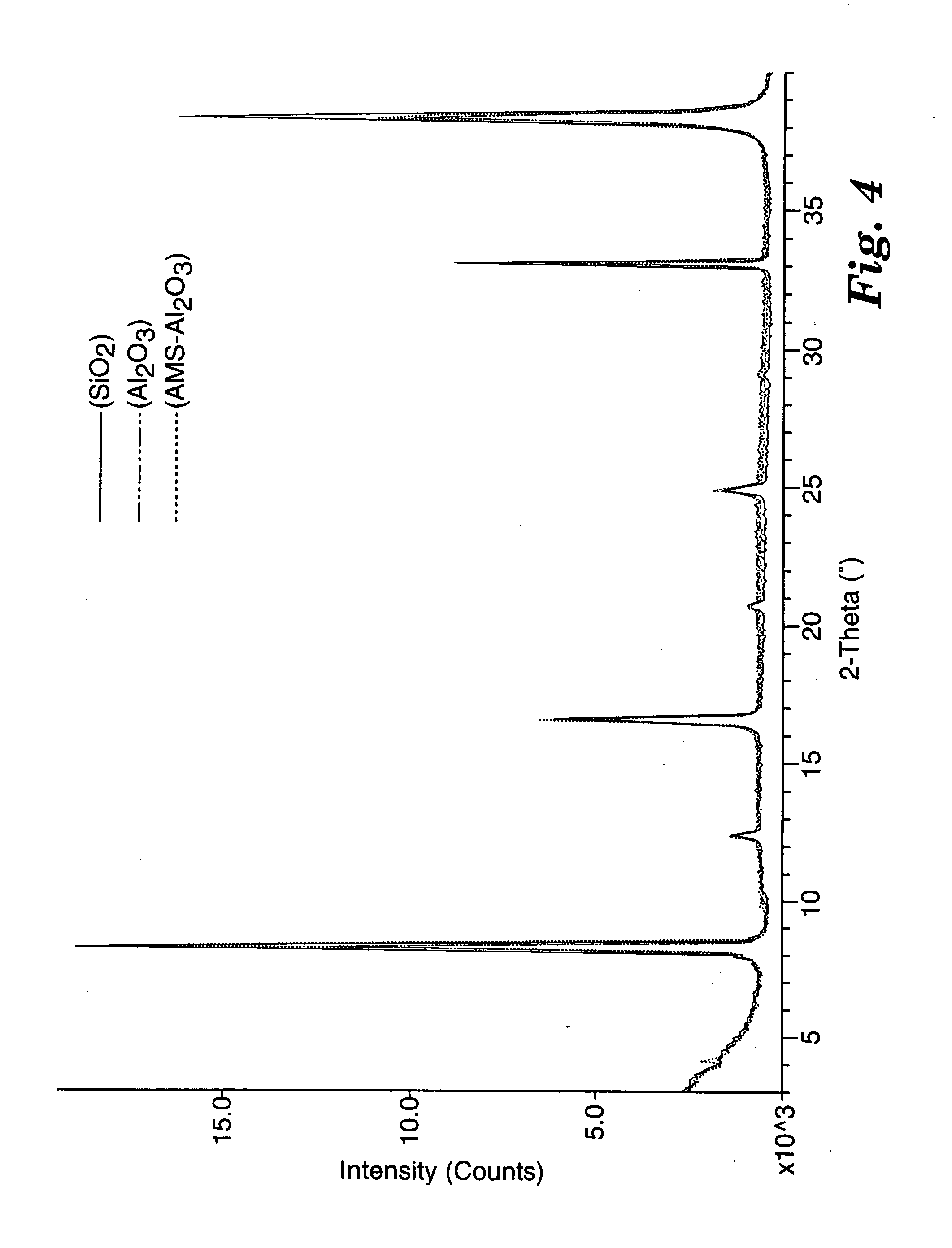Bis(2-acenyl)acetylene semiconductors
- Summary
- Abstract
- Description
- Claims
- Application Information
AI Technical Summary
Benefits of technology
Problems solved by technology
Method used
Image
Examples
example 1
Preparation of bis(2-anthracenyl)acetylene
Bis(tri-n-butylstannyl)acetylene was obtained from Frontier Scientific. Pd2(dba)3, P(t-Bu)3 (10 wt % in hexanes), and CsF (99.9%) were purchased from Strem. The CsF was mulled to a fine powder and dried under vacuum overnight at 80° C. Toluene was distilled from sodium and stored protected from the atmosphere in a Straus flask. Manipulations were carried out under nitrogen using standard Schlenk techniques. A 250 mL vessel was successively charged with Pd2(dba)3 (19 mg, 0.021 mmol, 0.5% mol), CsF (1.42 g, 9.33 mmol, 2.2 eq), PhMe (20 mL), 2-bromoanthracene (1.09 g, 4.24 mmol), bis(tributylstannyl)acetylene (1.29 g, 2.13 mmol), and P(t-Bu)3 (0.15 mL, 0.052 mmol, 1.2%), and the mixture stirred overnight at room temperature to yield a fine orange ppt in an amber solution. The solid was isolated on a filter frit, washed with water, and air dried. The orange crude product was purified by high vacuum train sublimation at a source temperature of...
example 2
The thermal properties of bis(2-anthracenyl)acetylene were investigated by differential scanning calorimetry (DSC) and thermal gravimetric analysis (TGA). The TGA data shows an onset of decomposition of around 370° C. A plot of the differential scanning calorimetry data is shown in FIG. 1. Data were collected by heating the material under a nitrogen atmosphere from 0° C. to 400° C. at 20° C. / min. Bis(2-anthracenyl)acetylene melts at ca. 389° C.; the phase change is accompanied by decomposition as evidenced by the subsequent exotherm. Under high vacuum, bis(2-anthracenyl)acetylene may be sublimed at ca. 225° C., or well below the decomposition point of the material.
example 3
X-ray diffraction patterns (Cu Kα radiation) for bis(2-anthracenyl)acetylene coated on 3 different substrates (SiO2, Al2O3, and Al2O3 coated with 100 Å of poly(α-methylstyrene) [AMS-Al2O3]) are shown in FIG. 4. Each sample produced a series of (0,0,1) layer lines with spacings and intensities that are roughly independent of the substrate type. The spacing of 21.4 Å corresponds to the extended molecular length, and indicates that the molecules are oriented perpendicular to the substrate plane. It is this intermolecular arrangement that allows for good charge transport through the active channel when the TFT is in the on state. The well-ordered nature of the films is evident from the narrow and intense reflection lines.
PUM
| Property | Measurement | Unit |
|---|---|---|
| Fraction | aaaaa | aaaaa |
| Fraction | aaaaa | aaaaa |
Abstract
Description
Claims
Application Information
 Login to View More
Login to View More - R&D
- Intellectual Property
- Life Sciences
- Materials
- Tech Scout
- Unparalleled Data Quality
- Higher Quality Content
- 60% Fewer Hallucinations
Browse by: Latest US Patents, China's latest patents, Technical Efficacy Thesaurus, Application Domain, Technology Topic, Popular Technical Reports.
© 2025 PatSnap. All rights reserved.Legal|Privacy policy|Modern Slavery Act Transparency Statement|Sitemap|About US| Contact US: help@patsnap.com



